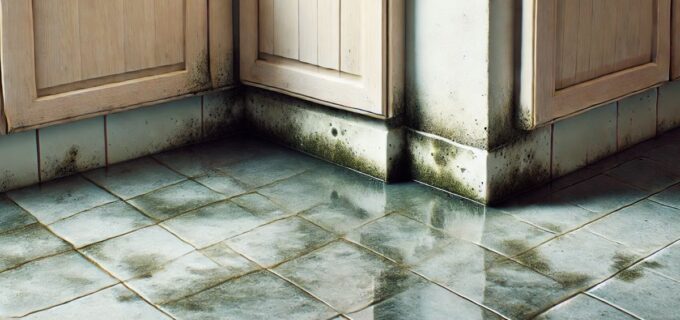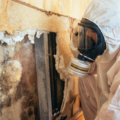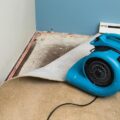
In the wake of a flood, property owners face not only the immediate challenges of water damage but also the looming threat of mold infestation. The humid climate of Singapore exacerbates this risk, making swift action crucial. At Big Red, we understand the urgency of addressing post-flood conditions to safeguard both property and health. This blog post aims to equip you with essential knowledge and strategies to prevent mold growth following a flood, ensuring a safe and healthy environment.
Understanding the Threat of Mold after a Flood
Mold, a ubiquitous fungal organism, thrives in environments rich in moisture and organic matter. Flooding creates ideal conditions for mold growth due to the abundance of moisture and organic material. Mold spores are everywhere in the environment, and they only need a hospitable environment to grow. Floodwaters can bring in contaminants such as sewage, chemicals, and debris, further complicating the cleanup process and increasing health risks. In Singapore’s tropical climate, where high humidity is a constant, the window for mold prevention narrows significantly, often to just 24 to 48 hours post-flooding.
Health Risks Associated with Mold
The presence of mold in indoor environments poses significant health risks, particularly to individuals with respiratory sensitivities, allergies, or compromised immune systems. Common symptoms of mold exposure include:
- Respiratory Issues: Mold spores can cause or exacerbate respiratory problems, including asthma and allergic reactions.
- Infections: Prolonged exposure to mold can lead to fungal infections, particularly in individuals with weakened immune systems.
- Toxic Effects: Certain types of mold, such as black mold (Stachybotrys chartarum), can produce mycotoxins that have severe health implications.
Prolonged exposure can lead to more severe health complications, underscoring the importance of prompt and thorough mold prevention and remediation efforts.
Immediate Post-Flood Protocol

Ensure Safety First
- Turn off Electrical Power: If it’s safe, turn off the electrical power to prevent electrocution hazards.
- Wear Protective Gear: Use gloves, masks, and boots to protect yourself from contaminants in the floodwater.
If there’s any doubt about the structural integrity of your property, consult with a professional before entry.
Assess the Damage
Conduct a thorough inspection of all affected areas, paying particular attention to basements, crawl spaces, and areas of water accumulation. Document the extent of damage through detailed photography and notes, which will prove invaluable for insurance claims and professional assessments.
Remove Standing Water
- Use Pumps and Wet Vacuums: Remove standing water as quickly as possible to minimize moisture levels.
- Dry the Area: Use fans and dehumidifiers to accelerate the drying process.
Discard Contaminated Materials
- Porous Materials: Remove and dispose of materials like carpets, drywall, and insulation that cannot be thoroughly cleaned or dried.
- Hazardous Materials: Follow community guidelines for disposing of hazardous waste.
Drying and Dehumidifying the Affected Area
Increase Air Circulation
- Open Windows and Doors: Facilitate air flow to help dry out the area.
- Use Fans and Dehumidifiers: Speed up the drying process with fans and dehumidifiers to remove excess moisture from the air.
Monitor Moisture Levels
- Moisture Meters: Use moisture meters to ensure that affected areas are drying properly.
- Humidity Levels: Aim to keep indoor humidity levels below 50% to prevent mold growth.
Preventing Mold Growth

Maintain Low Humidity
- Continuous Use of Dehumidifiers: Keep dehumidifiers running until the area is completely dry. This may take several days to weeks, depending on the extent of the flooding.
Inspect and Repair Leaks
- Fix Leaks Promptly: Repair any leaks in roofs, walls, or plumbing immediately to prevent future moisture problems.
- Ensure Proper Drainage: Make sure the ground around your home slopes away to prevent water from pooling around the foundation.
Use Mold-Resistant Products
- Mold-Resistant Drywall and Insulation: When repairing or renovating, use materials designed to resist mold growth.
- Mold-Resistant Paints: Apply mold-resistant paints to walls and ceilings in areas prone to moisture.
Regular Cleaning and Maintenance
- Clean HVAC Systems: Regularly clean and maintain AHU/ HVAC systems to prevent mold spores from spreading.
- Replace Filters: Change AU/ HVAC filters regularly to keep the system clean and efficient.
Long-Term Monitoring and Maintenance
Regular Inspections
- Check for Mold Signs: Conduct regular inspections for signs of mold growth, such as musty odors, water stains, and visible mold.
- Pay Attention to High-Risk Areas: Focus on areas previously flooded or prone to moisture buildup.
Emergency Preparedness
- Flood Preparedness Plan: Develop a plan for future floods, including steps for quick response and contact information for emergency services.
- Essential Supplies: Keep supplies like wet vacuums, fans, and protective gear readily available.
Professional Intervention
Recognizing the need for professional help is crucial in severe cases of water damage or extensive mold infestation. Professional restoration services offer:
- Advanced water extraction and drying techniques
- Specialized mold remediation protocols
- Industrial-grade equipment for efficient moisture removal
- Expert assessment and remediation strategies
Case Studies: Learning from Real-World Scenarios
Singapore Condominium Complex: A Success Story
Following a severe flash flood, a luxury condominium in Singapore’s River Valley area faced significant water intrusion. The property management’s swift action, involving immediate water extraction and engagement of professional restoration services, prevented widespread mold growth. Key to their success was the deployment of industrial dehumidifiers and the implementation of a comprehensive moisture monitoring program.
Commercial Building in Tanjong Pagar: Lessons in Preparedness
A commercial property in Tanjong Pagar’s business district demonstrated the value of preparedness when faced with flooding from a burst water main. Their pre-established flood response plan, which included on-site water pumps and a network of professional contacts, allowed for rapid water removal and drying. This prompt action not only prevented mold growth but also minimized business interruption.
Conclusion
In the battle against post-flood mold growth, knowledge and swift action are your most potent weapons. By understanding the conditions that foster mold proliferation and implementing targeted prevention strategies, property owners can significantly mitigate the risk of infestation.
Secure Your Home with Big Red: Expert in Mold Prevention and Restoration
At Big Red, we’re committed to empowering our clients with the information and services needed to maintain healthy, mold-free environments. Remember, in the fight against mold, time is of the essence. Prompt action, thorough cleaning, and professional assistance when necessary are key to safeguarding your property and health in the aftermath of flooding. We utilize advanced technology to identify and eradicate mold, preventing further spread and safeguarding your indoor air quality. Our holistic approach covers every aspect of mold prevention, from immediate drying and dehumidification to long-term air quality management and regular inspections. Recognizing that each flooding situation is unique, we tailor our strategies to meet your specific needs, delivering optimal results for your home or office.
Don’t let the threat of mold compromise your health and home. Trust Big Red to restore safety and cleanliness to your space. Contact us today for a professional assessment, comprehensive mold remediation, and tailored preventive measures. Email us at info@bigred.com.sg, call +65 6241 9443, or reach out via WhatsApp at +65 9321 9321. Let Big Red be your partner in creating a safer, mold-free home after flood damage.




